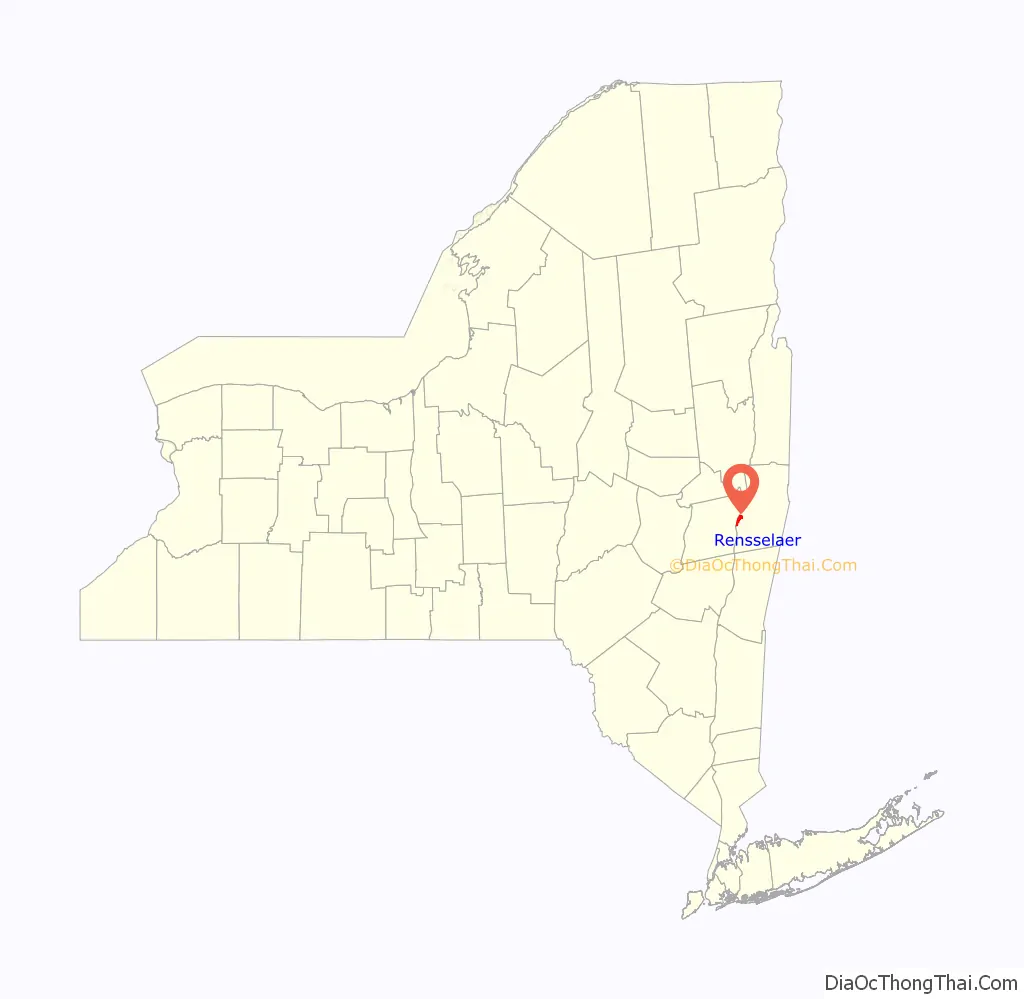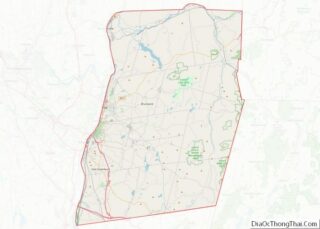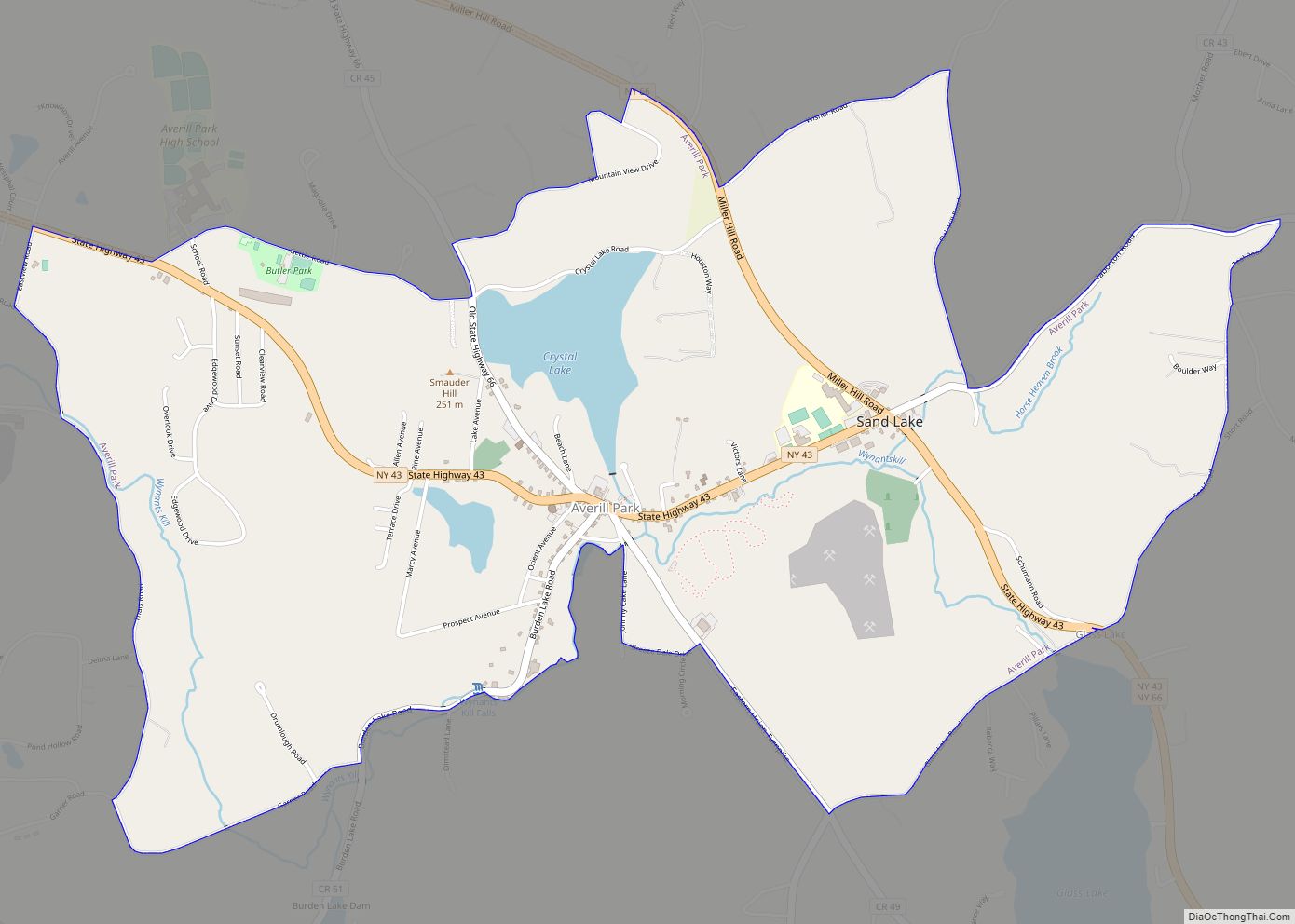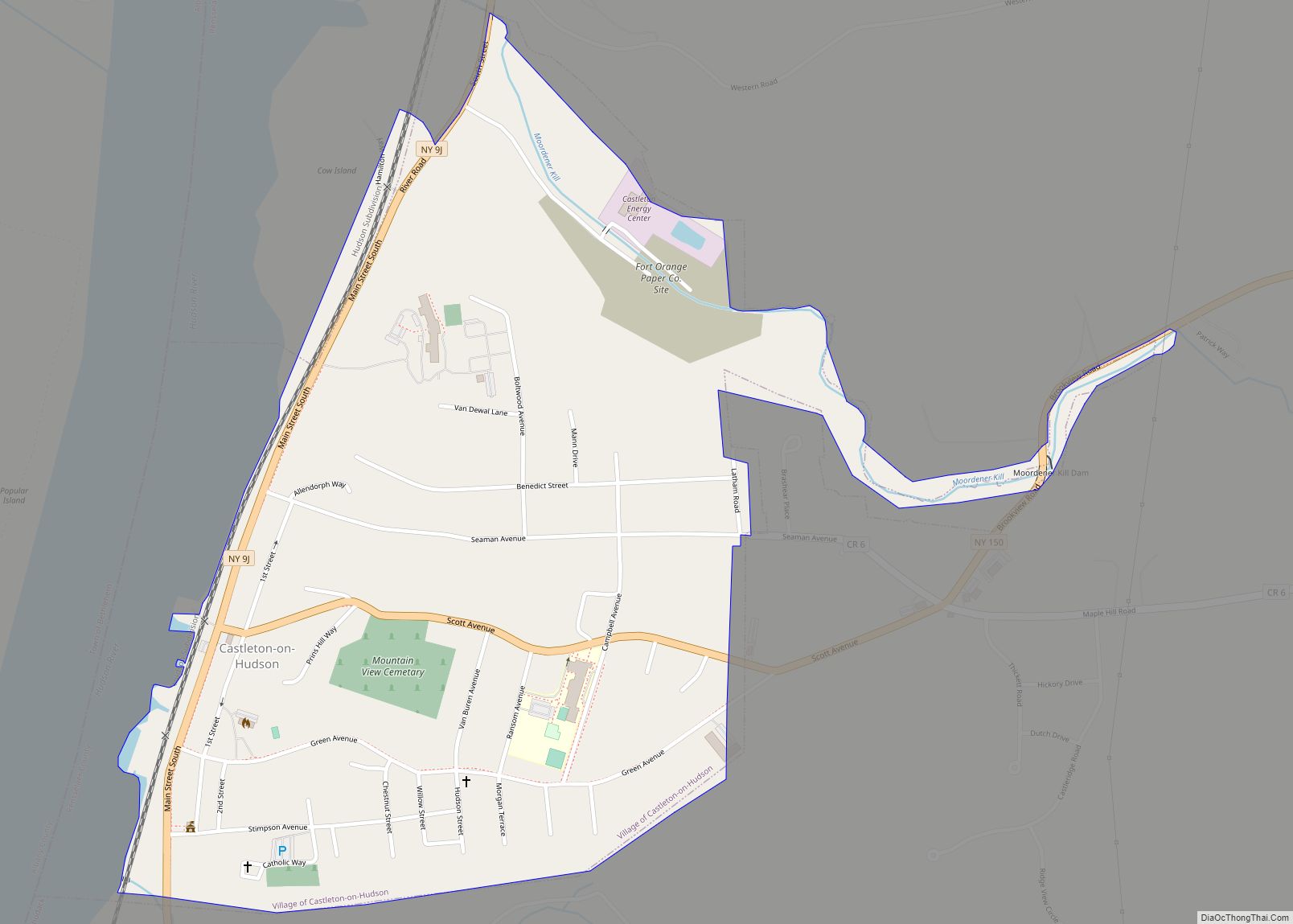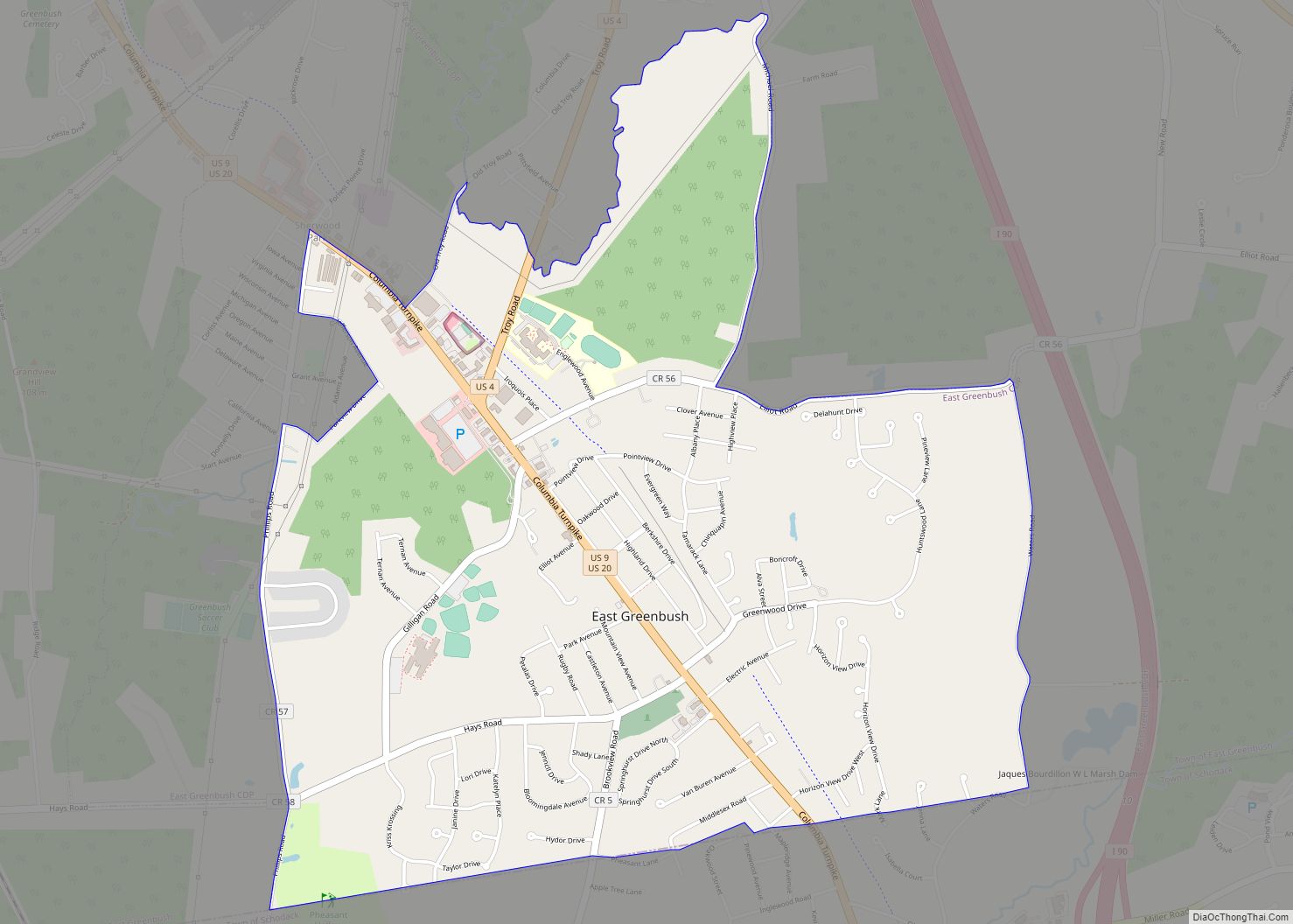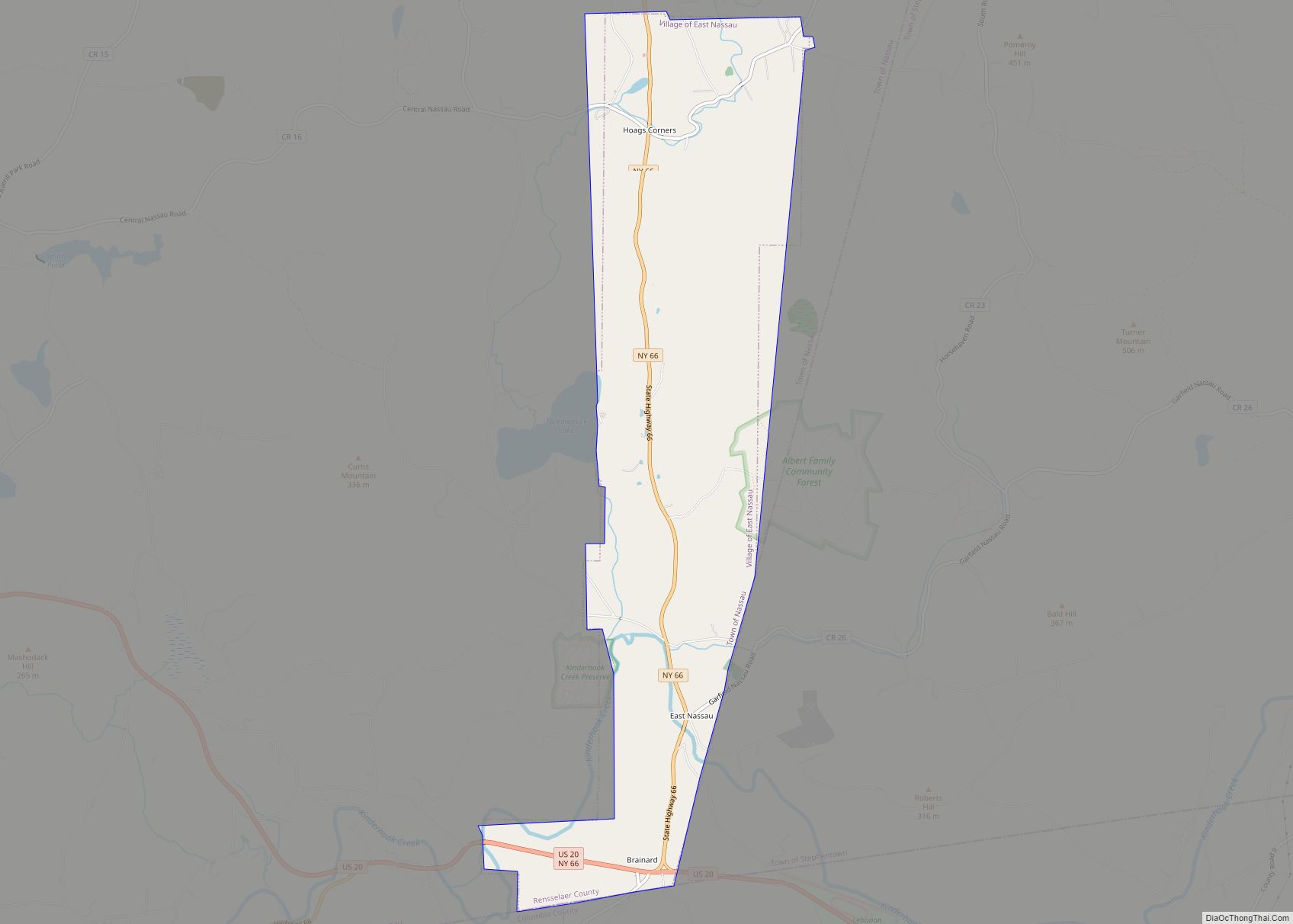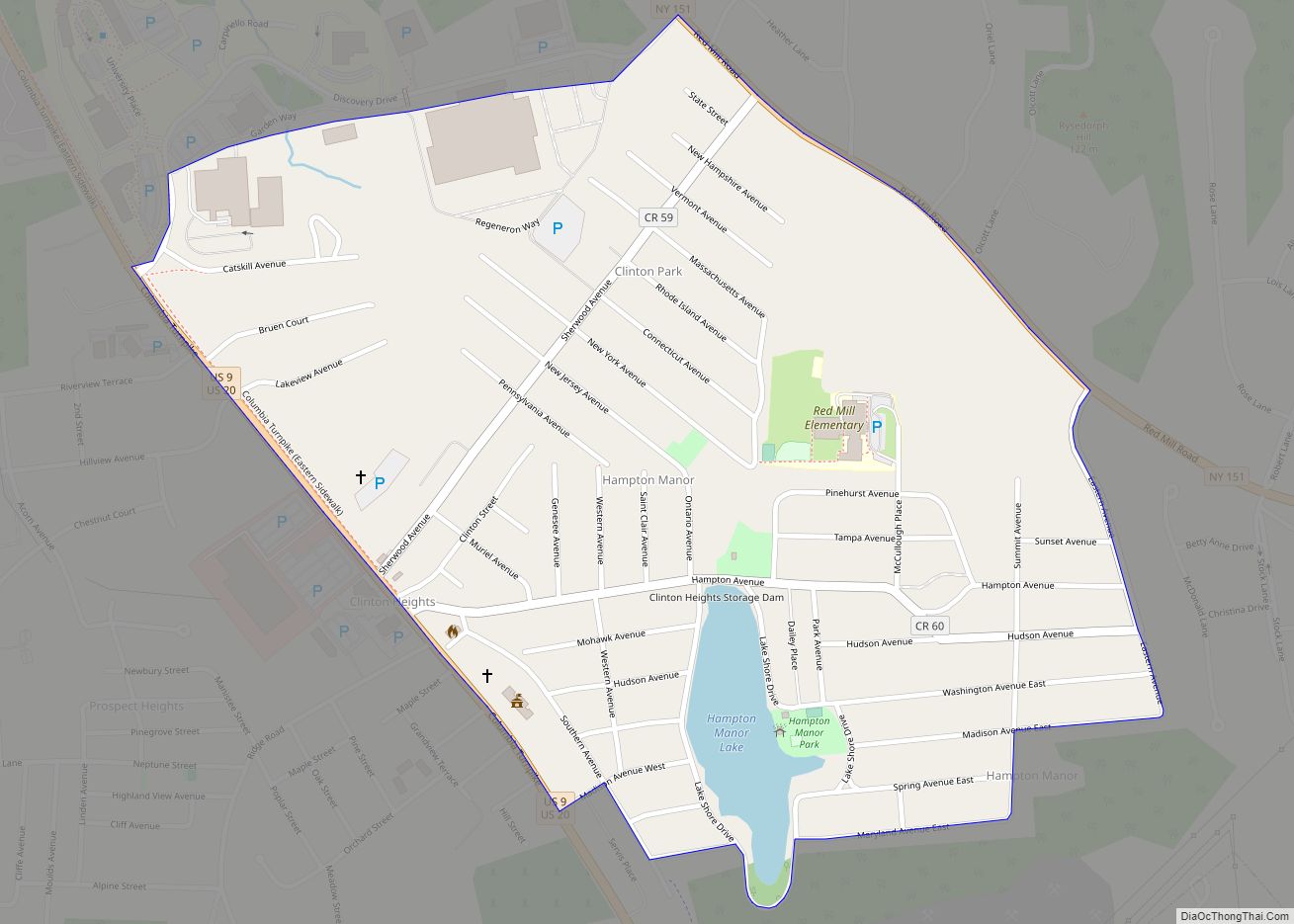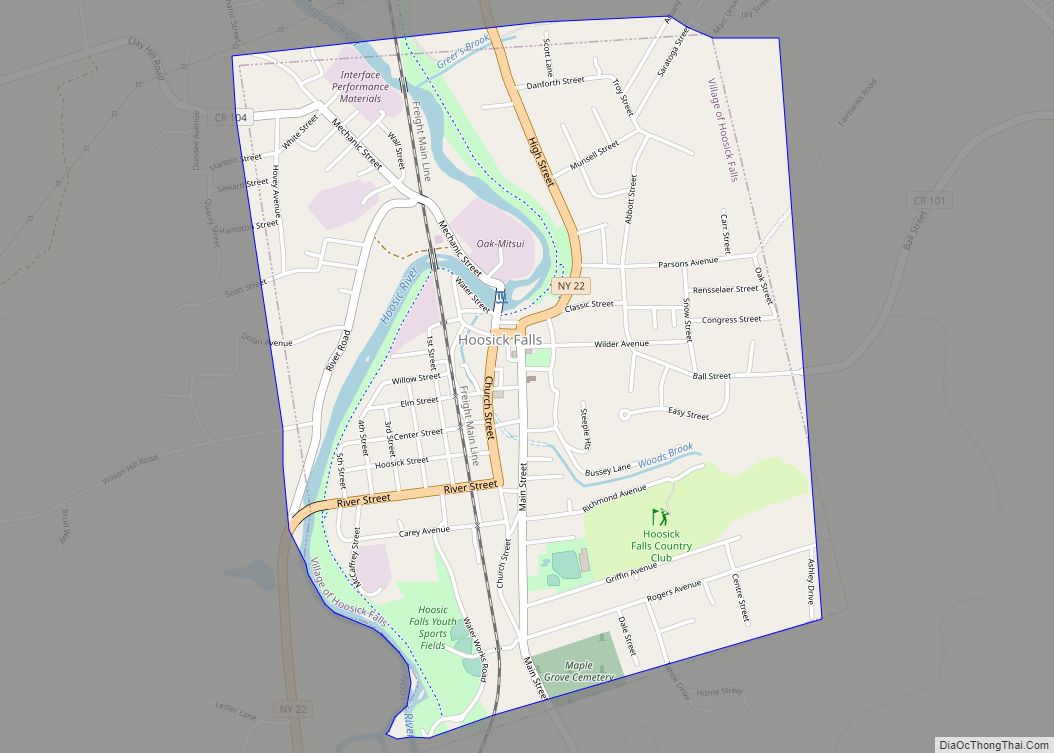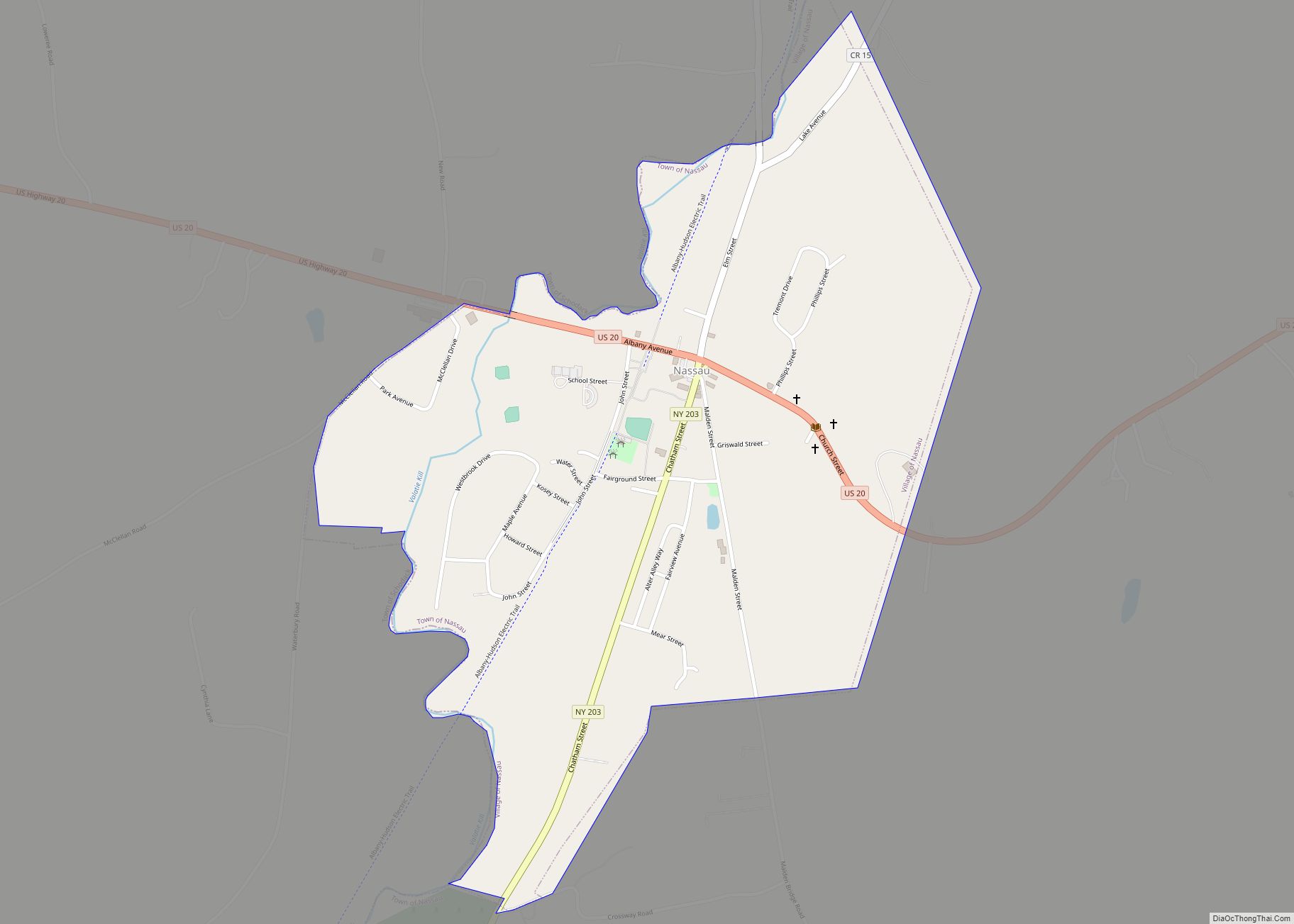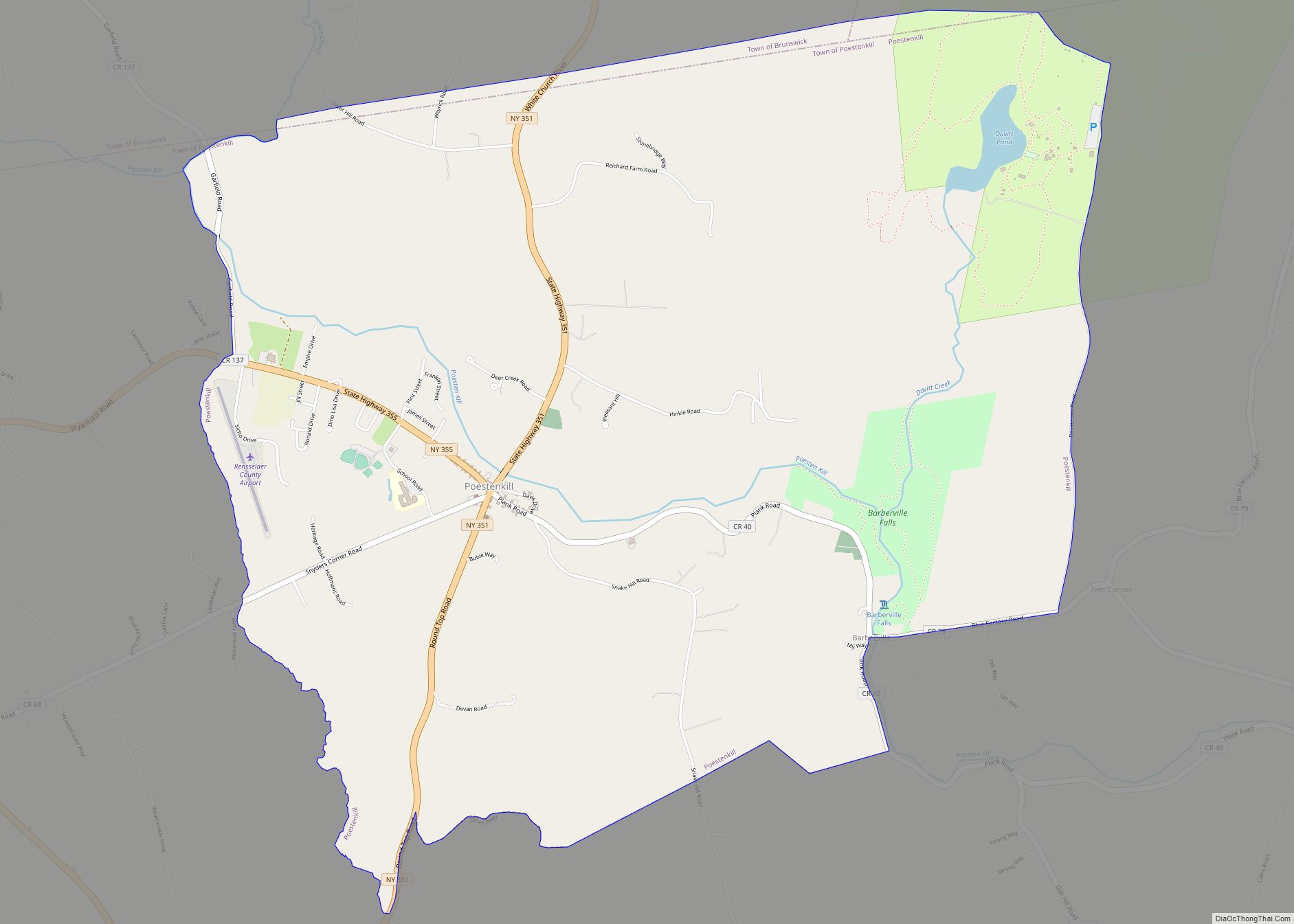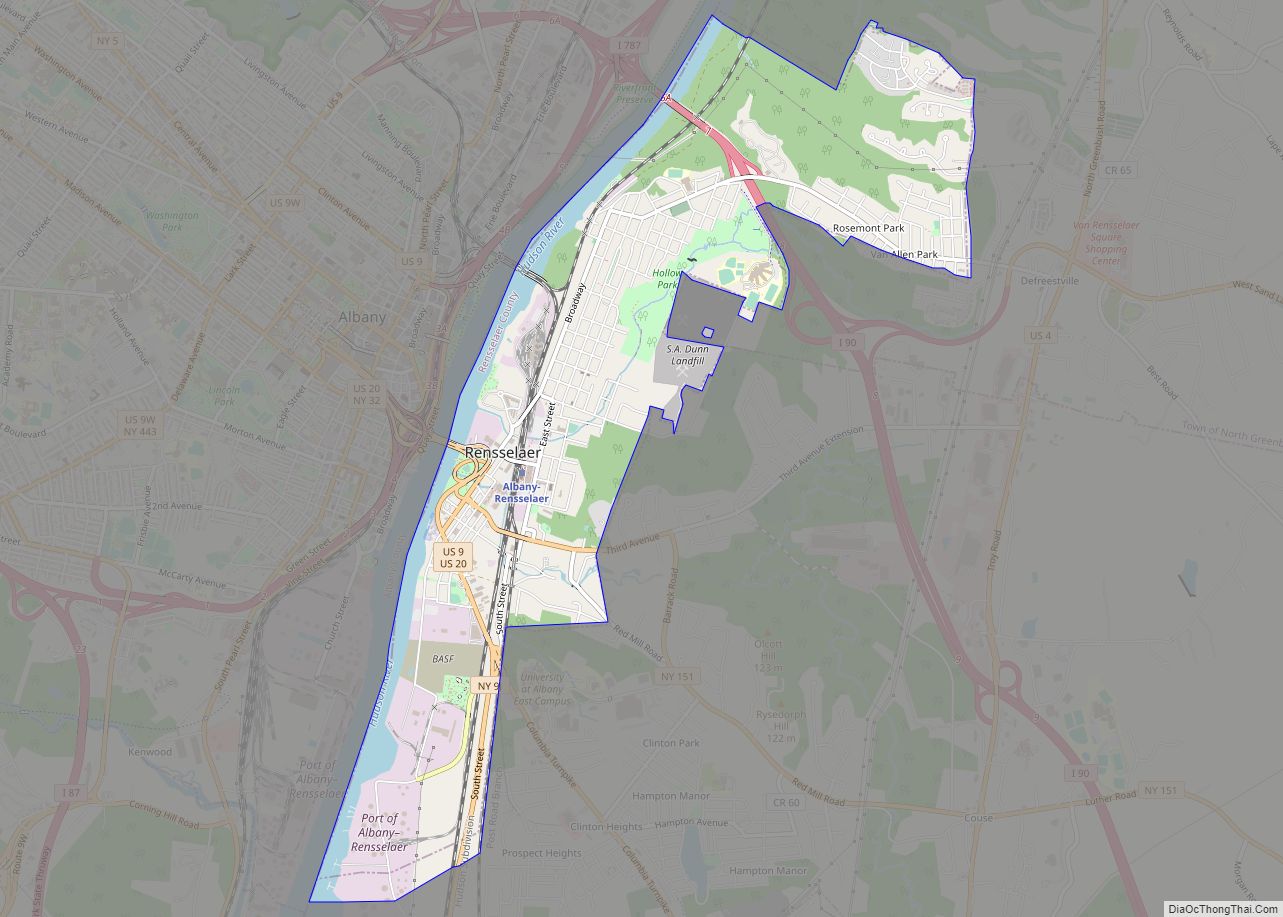Rensselaer /rɛnsəˈlɪər/ is a city in Rensselaer County, New York, United States, and is located on the east side of the Hudson River, directly opposite of Albany. As of the 2020 census, the city population was 9,210. Rensselaer is on the western border of Rensselaer County. The area now known as the City of Rensselaer was settled by the Dutch in the 17th century, who called it t’Greyn Bos, which became Greenbush in English. The city has a rich industrial history stretching back to the 19th century, when it became a major railroad hub; In 2020, Albany-Rensselaer was the ninth busiest Amtrak station in the country and the second busiest in New York State. Rensselaer was one of the earliest locations of the dye industry in the United States, and was the first American location for the production of aspirin.
| Name: | Rensselaer city |
|---|---|
| LSAD Code: | 25 |
| LSAD Description: | city (suffix) |
| State: | New York |
| County: | Rensselaer County |
| Elevation: | 16 ft (5 m) |
| Total Area: | 3.51 sq mi (9.10 km²) |
| Land Area: | 3.18 sq mi (8.23 km²) |
| Water Area: | 0.33 sq mi (0.87 km²) |
| Total Population: | 9,210 |
| Population Density: | 2,897.14/sq mi (1,118.75/km²) |
| ZIP code: | 12144 |
| FIPS code: | 3661148 |
| GNISfeature ID: | 0962384 |
| Website: | http://www.rensselaerny.gov |
Online Interactive Map
Click on ![]() to view map in "full screen" mode.
to view map in "full screen" mode.
Rensselaer location map. Where is Rensselaer city?
History
Early settlement and growth
The natives of the area called it Petuquapoern and Juscum catick, and the Dutch claimed the land in 1609 based on Henry Hudson’s exploration of the Hudson River on board the Dutch ship, Halve Maen. Later the area was called “De Laet’s Burg” in honor of one of the directors of the Dutch West India Co. Settlement occurred at least as early as 1628. By 1642, there was a brewery and many farms, also a ferry was established by Hendrick Albertsen running from the mouth of Beaver Creek in Beverwyck (Albany) to the future Rensselaer. Greenbush (originally t’Greyn Bos in Dutch) was the earliest settlement from Dutch times. The hamlet of East Albany was part of the village of Greenbush. The second hamlet that would be incorporated was Bath (also Bath-on-Hudson), which was laid out in 1795 and incorporated as a village prior to 1874.
The Van Rensselaer family, who were the feudal landholders of the entire future Rensselaer County, built a residence in the future city of Rensselaer. This property was inherited by Hendrick van Rensselaer, Kiliaen van Rensselaer’s grandson, who built Fort Crailo in approximately 1712. It was built on the site of where Dominie Megapolensis built his own house in 1642. Crailo was expanded in 1762–1768. At various times, the grounds were used as a campground for British and colonial troops. It is reportedly the place where, in 1755, British Army surgeon Richard Shuckburgh, quartered in the home, wrote the ditty “Yankee Doodle” to mock the colonial troops who fought with the British in the French and Indian Wars. Fort Crailo was declared a National Historic Landmark in 1961.
The hamlet of Greenbush was a tract of land about one square mile in size, and is that portion of the city between Partition and Mill Street. This was purchased in May 1810 by William Akin, Titus Goodman and John Dickinson from Stephen Van Rensselaer and Stephen N. Bayard, assignees of John J. Van Rensselaer. The village was later incorporated in 1815. A new charter was granted in 1828, which was amended in 1854, and again in 1863, and a new charter in 1871. In 1897, Greenbush was chartered as a city, and its name was changed to Rensselaer. Its limits were extended in 1902 by the annexation of the village of Bath and the western part of the town of East Greenbush.
Industrialization and modernization
In the 19th century Rensselaer became the site of the Boston & Albany Railroad’s (B&A) passenger depot, shops, freight houses, roundhouse, and coach yard. It was the site of transfers between trains of the New York Central Railroad and the B&A. A ferry transported people to and from the Van Rensselaer Island and downtown Albany at Maiden Lane. In 1871, the Maiden Lane Bridge was built replacing the ferry. In 1903, the channel that separated the island from the mainland was filled in with sand dredged from the bottom of the Hudson River. When the NY Central and the B&A merged in 1900 the island’s activities became less important, though a new roundhouse and coach yard was built even as many buildings were demolished.
In 1881, the Hudson Riverfront Art Park in Rensselaer was the site of the first recorded major league Grand Slam in baseball history. In 1882, the Hudson River Aniline and Color Works built their first plant in Rensselaer (building 61), however it burned 13 years later. In 1895, Building 61 was rebuilt and at the same time Building 71 was built as well. It would be acquired by the Bayer Corporation in 1903, which then built one of the largest and most up-to-date factories of its time in the US and the Rensselaer plant became the American home for the production of brand-name Aspirin. The US government seized the property in 1917 during World War I as enemy property, Bayer being a German company. It would later be owned by the General Aniline and Film Company, and then BASF. In 1927, it was the first plant to produce solid diazo salts in the United States. The plant went through 12 separate owners or subsidiaries in its lifetime, in the 1990s it was the oldest dye plant in continuous operation and also produced more dye than any other plant in the United States. According to a promotional brochure issued around 1993 by the BASF Corporation the Rensselaer plant was the largest North American dyestuffs production facility. The plant was shut down for good on December 28, 2000.
In 1932, next to the BASF plant, the Port of Albany-Rensselaer was built, mostly in neighboring Albany, but also with 35 acres (140,000 m) in the southern part of Rensselaer. The docks on the Rensselaer side were built in the 1970s.
The 1960s were a major time of change for the city of Rensselaer. In 1967 the current Dunn Memorial Bridge was built between Albany and Rensselaer. Though the bridge was to continue east through Rensselaer, with the South Mall Arterial connecting with Interstate 90 at Exit 8, this extension never materialized. In 1968, the Amtrak station in Albany (Union Station) was relocated to Rensselaer; the Maiden Lane Bridge and all the railroad associated buildings were demolished when in 1969 the Rensselaer City School high/middle school campus was built north of Quackenderry Creek.
In the 2000s, another wave of development has been occurring in Rensselaer. In 2007, U.W. Marx Construction built a brand new campus for the Rensselaer City School District in the Northern section of the city in exchange for waterfront property that the Rensselaer Middle High School had occupied. The new school replaced the Rensselaer Middle High School and Van Rensselaer Elementary, formerly Van Rensselaer High. Doane Stuart occupies the former elementary school. The redevelopment of the waterfront property is named DeLaet’s Landing in honor of Johan de Laet. The first $20 million, 96 unit apartment building opened in 2019. Construction began on a second luxury apartment building on the site in September 2021. The former Van Rensselaer High School was listed on the National Register of Historic Places in 2012.
In January 2023, final approvals were issued to advance the Barnet Mills Apartments redevelopment at the former site of Hilton Center. The project is an undertaking by BBL Construction to revitalize the property along the Hudson River that sits adjacent to the city boat launch and park. It was once home to Barnet Mills, producing wool products for many years. The buildings were last occupied for various artists and specialty businesses.
The City is also currently planning for the construction of a riverfront trail system that spans from the City’s Boat Launch to the Hudson Riverfront Art Park over more than a mile of riverfront properties. The grant-funded trail will have multi-modal connections to the Livingston Avenue Bridge, which is a reconstruction project valued at over $400 million that has received state and federal funds.
Rensselaer Road Map
Rensselaer city Satellite Map
Geography
According to the United States Census Bureau, the city has a total area of 3.3 square miles (8.5 km), of which 3.0 square miles (7.8 km) is land and 0.3 square miles (0.78 km) (9.61%) is water. The city is flat along the western and southern areas but the center and northern areas slope steeply to the east.
The city lies next to the Hudson River with Albany County and the city of Albany on the opposite shore. The town of North Greenbush borders the city to the north, and the town of East Greenbush is on the southern border; both towns border the city on the east, with the dividing line between the two towns meeting Rensselaer in the middle section of the city’s eastern boundary. Rensselaer’s southern border is even with the city of Albany’s southern border; however, the northern border of Rensselaer is slightly south of Albany’s corresponding northern border.
See also
Map of New York State and its subdivision:- Albany
- Allegany
- Bronx
- Broome
- Cattaraugus
- Cayuga
- Chautauqua
- Chemung
- Chenango
- Clinton
- Columbia
- Cortland
- Delaware
- Dutchess
- Erie
- Essex
- Franklin
- Fulton
- Genesee
- Greene
- Hamilton
- Herkimer
- Jefferson
- Kings
- Lake Ontario
- Lewis
- Livingston
- Madison
- Monroe
- Montgomery
- Nassau
- New York
- Niagara
- Oneida
- Onondaga
- Ontario
- Orange
- Orleans
- Oswego
- Otsego
- Putnam
- Queens
- Rensselaer
- Richmond
- Rockland
- Saint Lawrence
- Saratoga
- Schenectady
- Schoharie
- Schuyler
- Seneca
- Steuben
- Suffolk
- Sullivan
- Tioga
- Tompkins
- Ulster
- Warren
- Washington
- Wayne
- Westchester
- Wyoming
- Yates
- Alabama
- Alaska
- Arizona
- Arkansas
- California
- Colorado
- Connecticut
- Delaware
- District of Columbia
- Florida
- Georgia
- Hawaii
- Idaho
- Illinois
- Indiana
- Iowa
- Kansas
- Kentucky
- Louisiana
- Maine
- Maryland
- Massachusetts
- Michigan
- Minnesota
- Mississippi
- Missouri
- Montana
- Nebraska
- Nevada
- New Hampshire
- New Jersey
- New Mexico
- New York
- North Carolina
- North Dakota
- Ohio
- Oklahoma
- Oregon
- Pennsylvania
- Rhode Island
- South Carolina
- South Dakota
- Tennessee
- Texas
- Utah
- Vermont
- Virginia
- Washington
- West Virginia
- Wisconsin
- Wyoming

